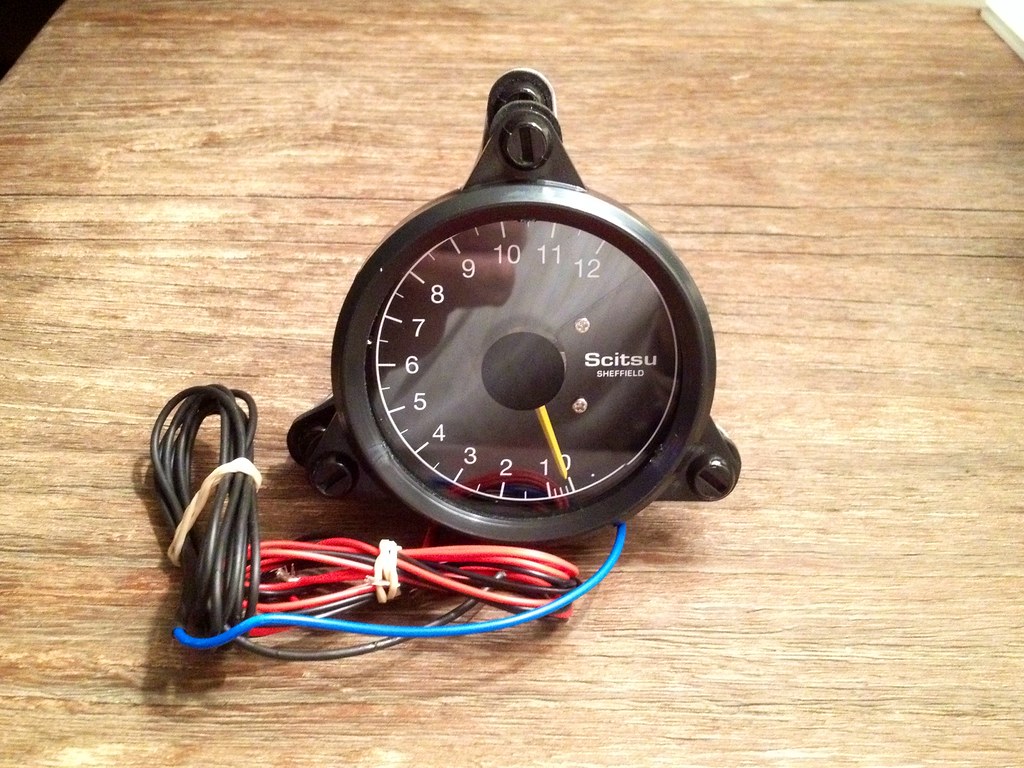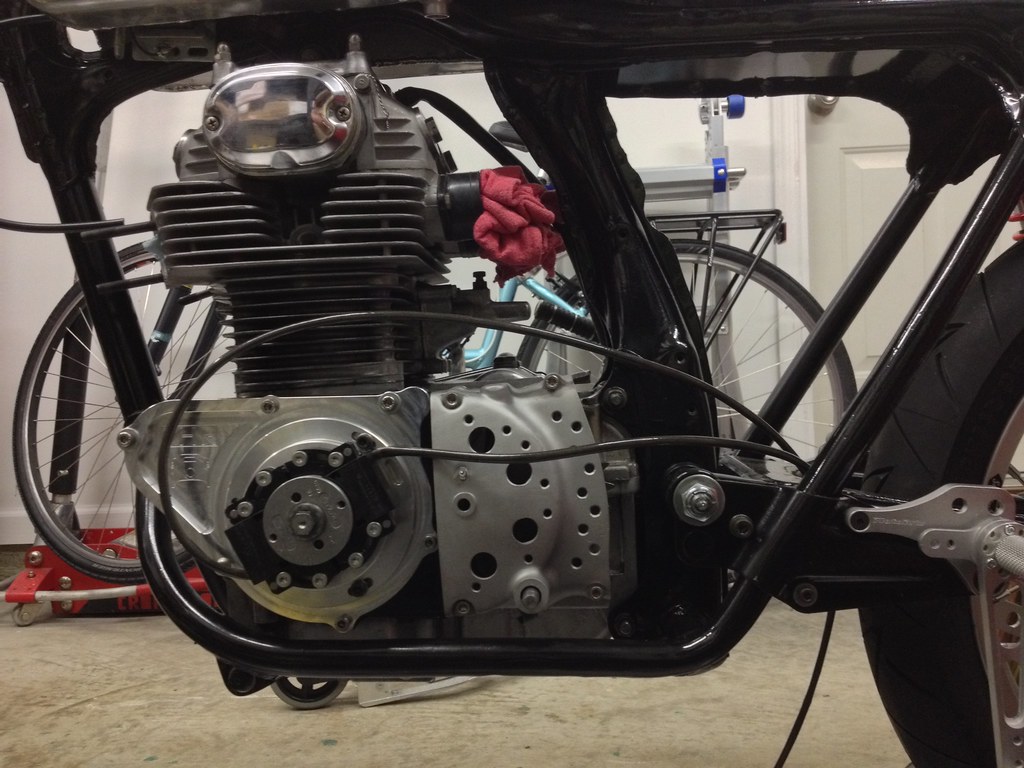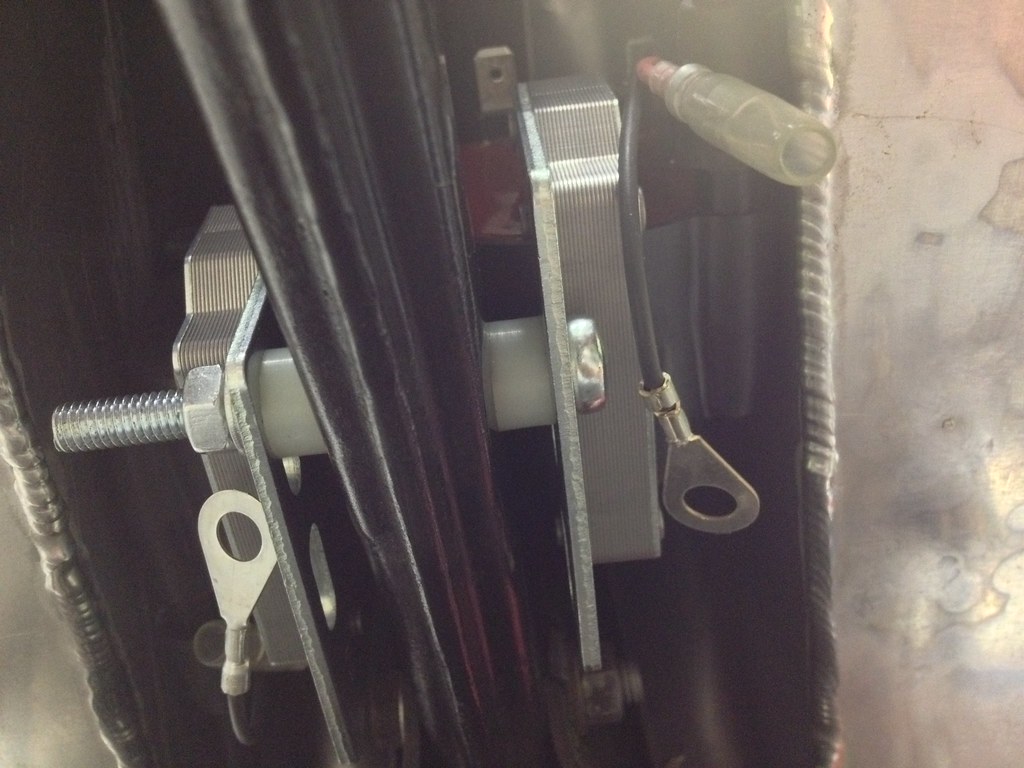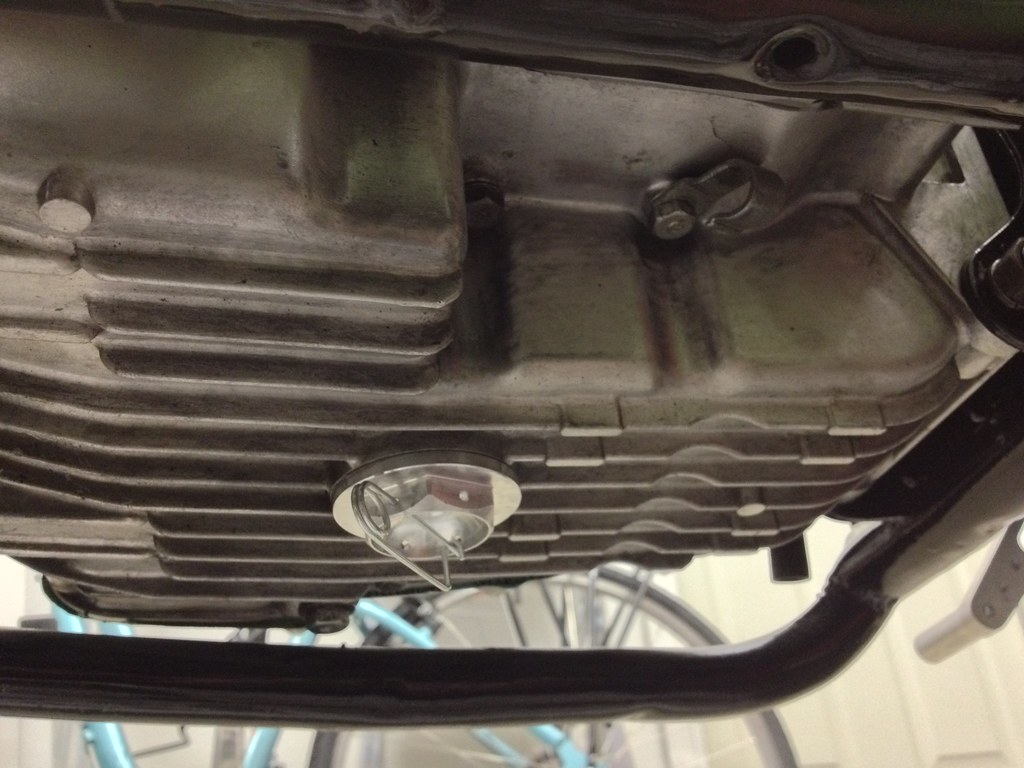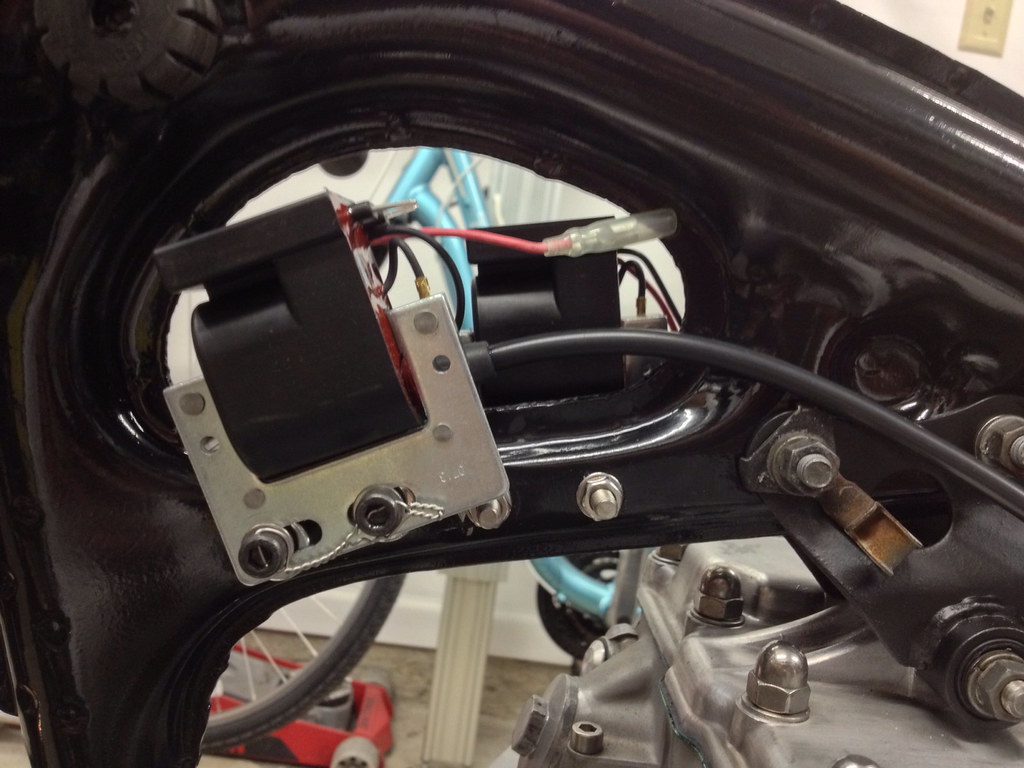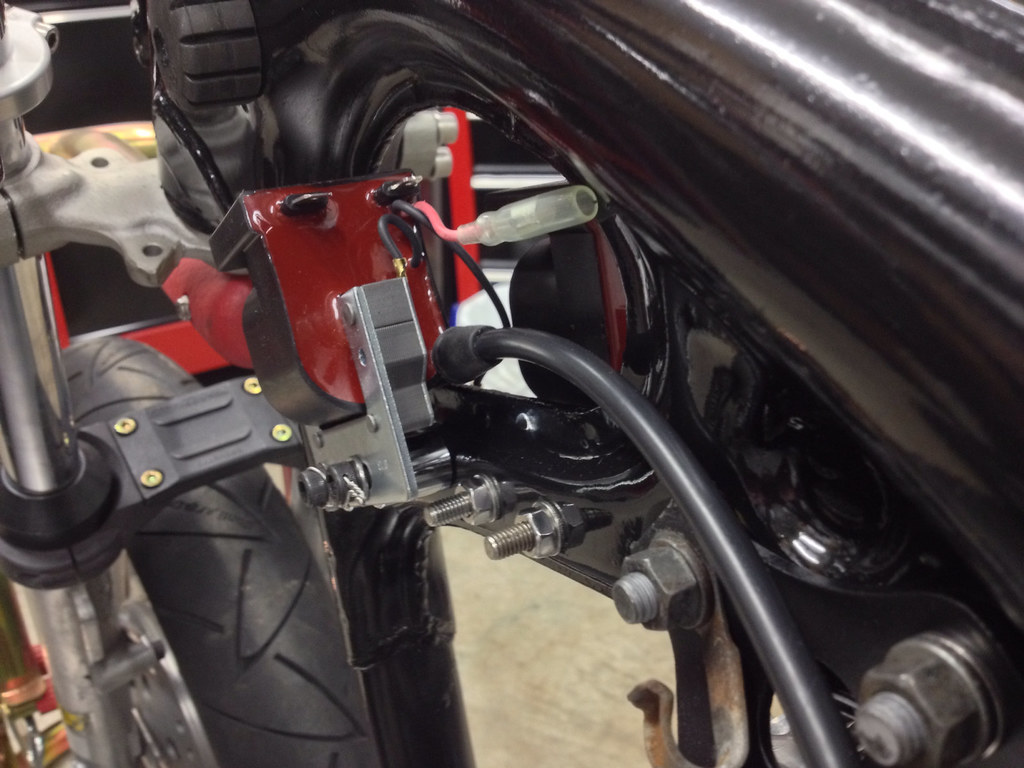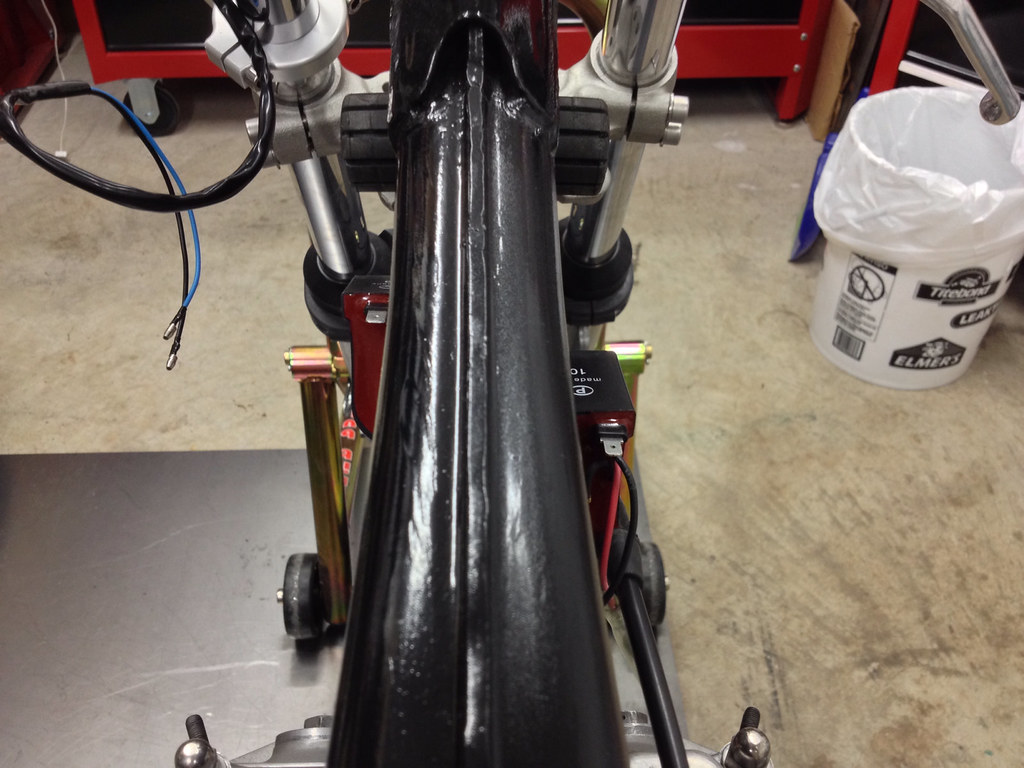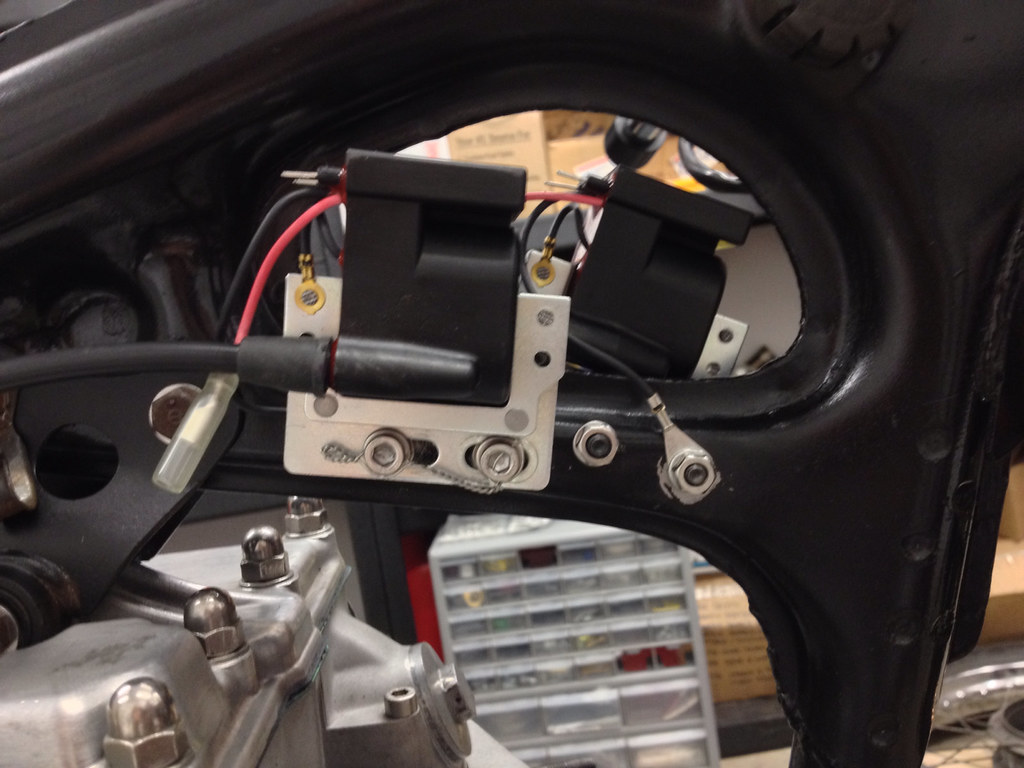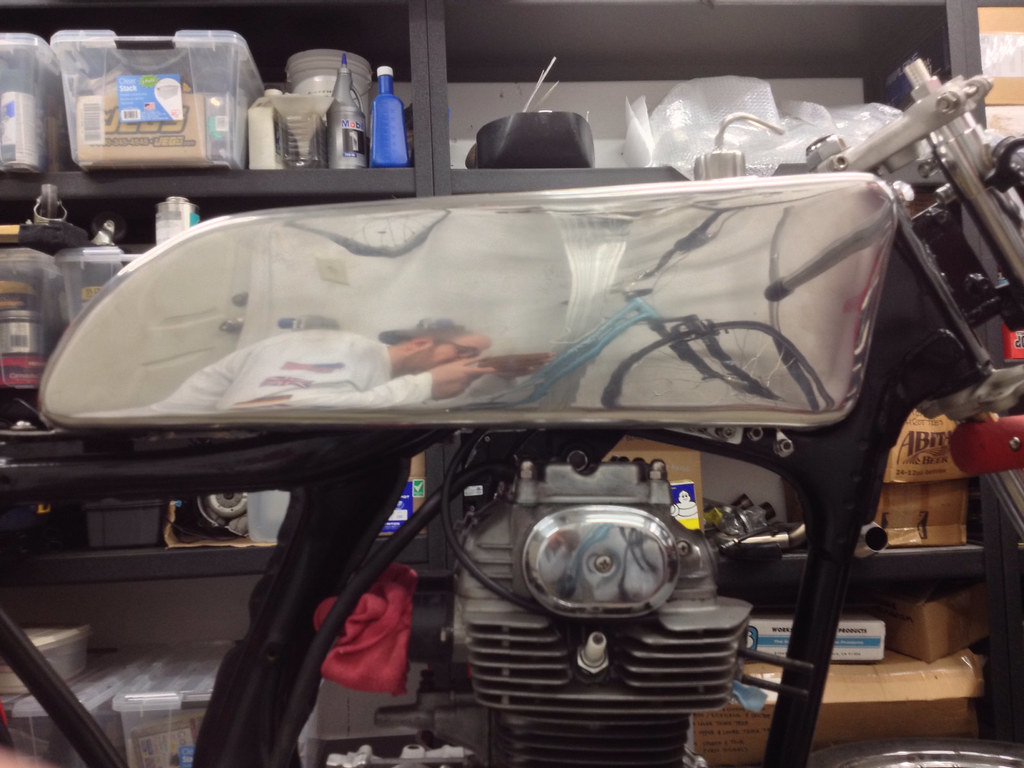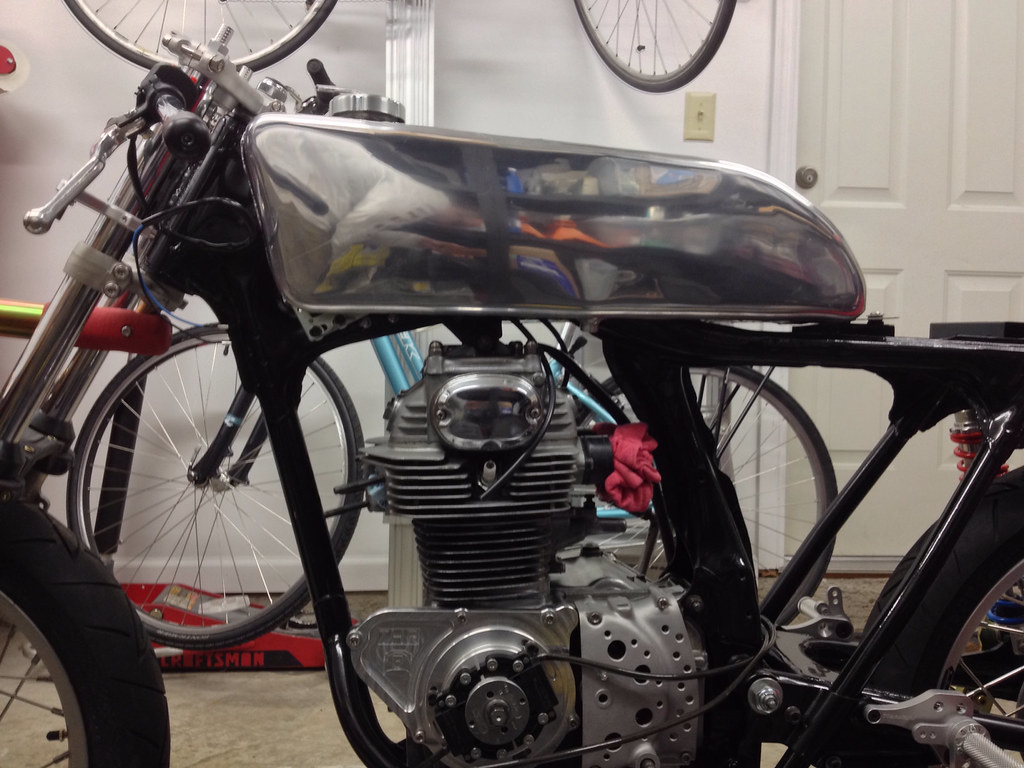vintage race CB350 - attending to details
Latest CB350 status update.
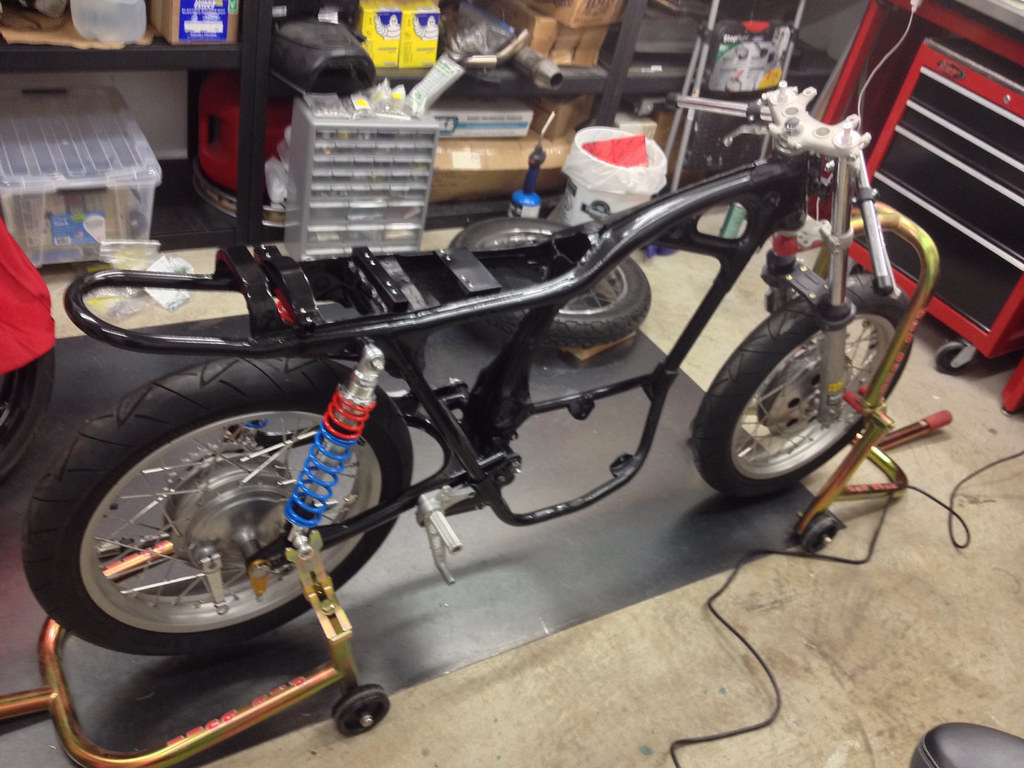
It's starting to look like a motorcycle once again.
Metric Floating Nut Plates
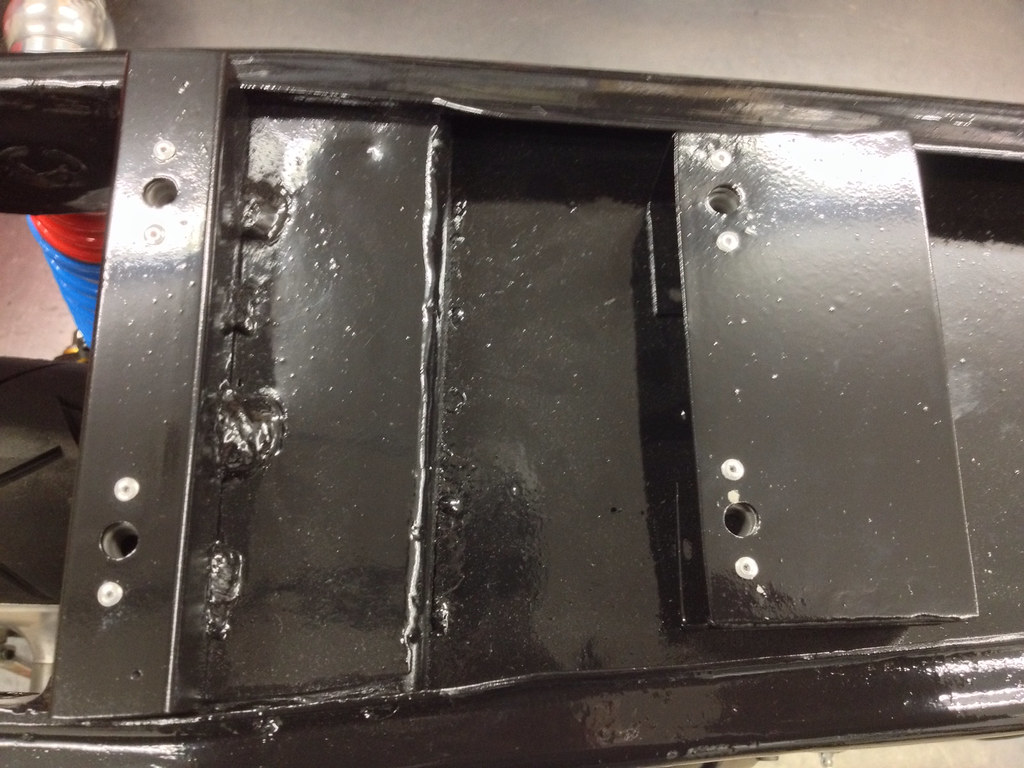
These lightweight, low-profile plates are an excellent way to install a captive nut behind a panel. They allow a bit of misalignment so there's very little struggle when installing bolts. Not as trick as quarter turn quick release fasteners but much simpler and cheaper to implement. These are used to affix my fuel tank and seat to the frame. Never again will I be searching the ground for a missing nut!
Right side detail
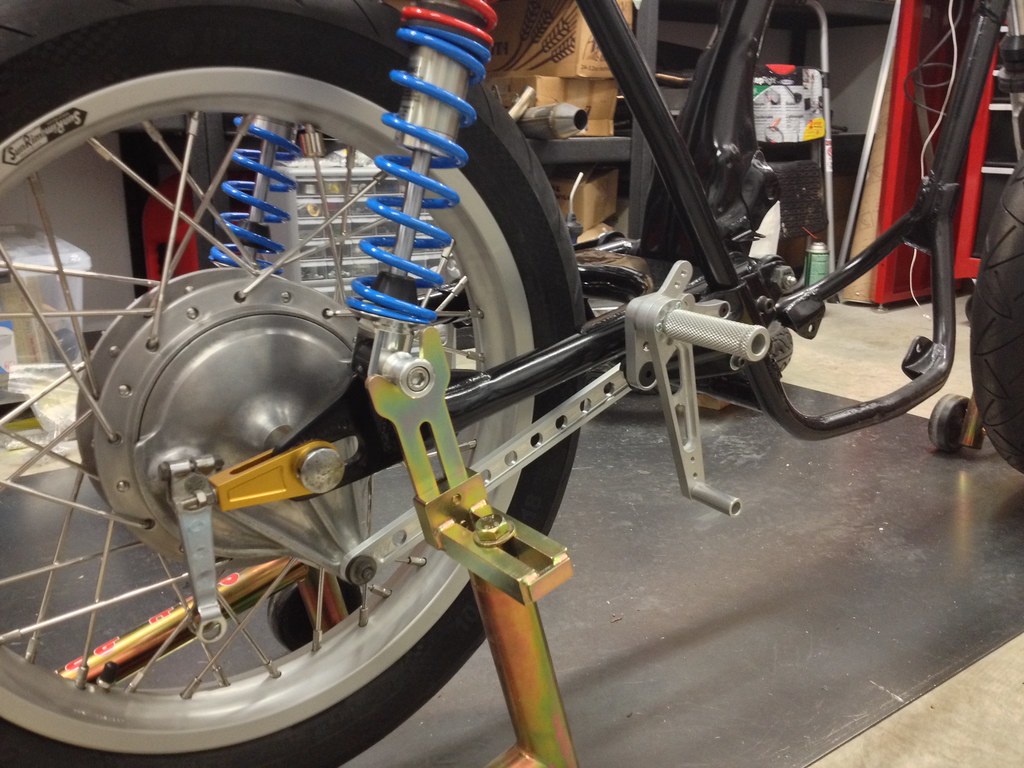
Rear shock mounts double as spool lifts. TTR400 axle adjusters converted from ridiculous unobtanium M7 bolts to standard M6 bolts using TimeSert kit. Joker Machine rear drum brake stay rod. Amazing I was able to find the specialty shoulder bolts for mounting that in a zip lock bag of rusty junk that was all tossed together in haste the last time I moved work shops.
Rear Sprocket Detail
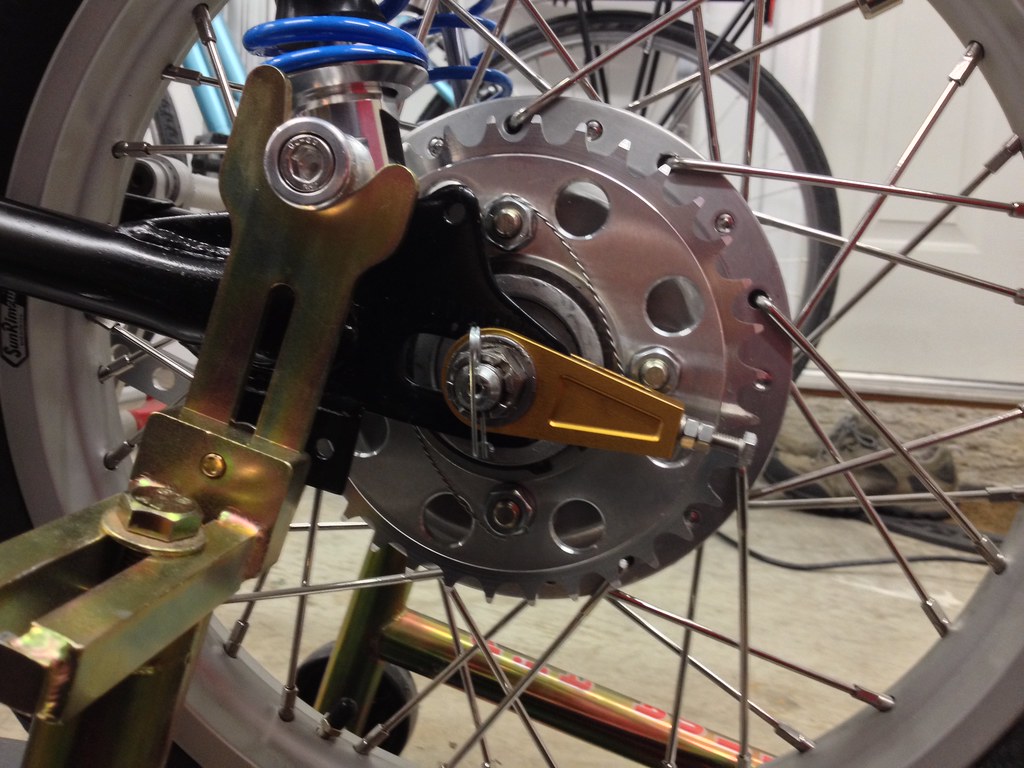
520 aluminum rear sprocket installed. I ditched the rear sprocket mounting stud lock tabs and used plain washers instead. Stainless steel M10x1.25 nuts were corner drilled and safety wired so they don't come off. Reusable safety pin in rear axle will get safety wired to that little hole above it. I solved my rear sprocket / shock mount clearance problem when I realized I can just slide the axle back a little. Sometimes the answer is staring you right in the face.
Motobits Rearsets
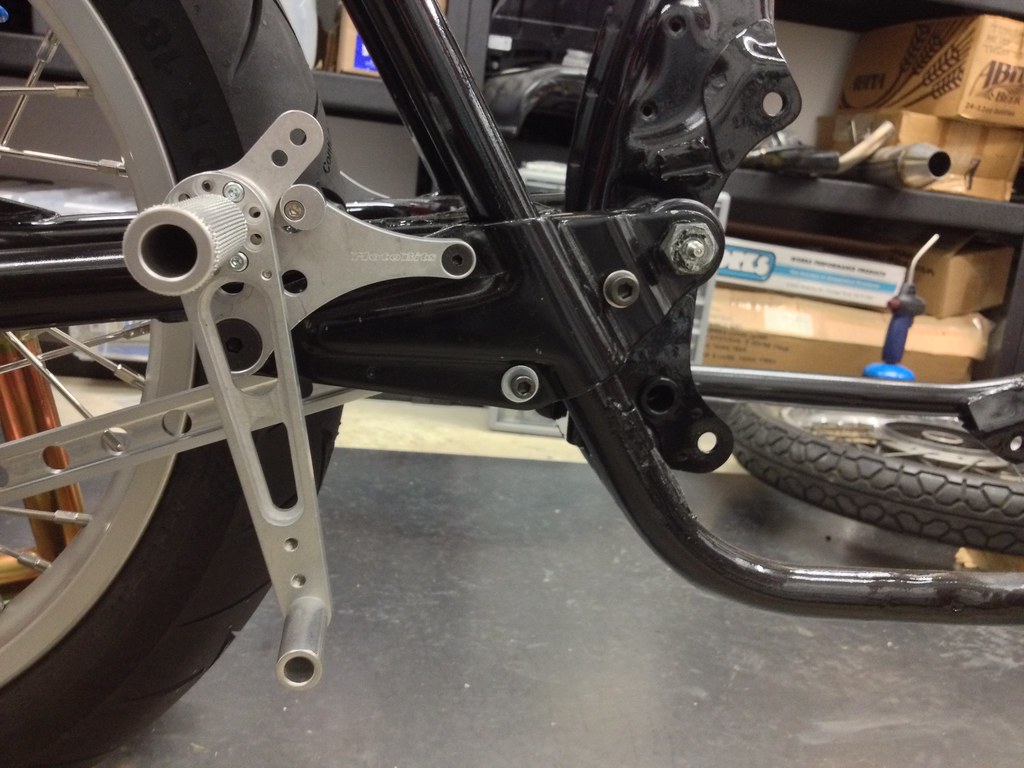
I replaced the footpeg bolts on both sides with shorter ones. The right side has plenty of clearance between footpeg bolt and swingarm. The left side not so much. My Motofiaccone exhaust originally mounted to the rear engine mount but this precludes me from installing the necessary belly pan. So I think I will move the rear exhaust mount to the bottom of the two M6 footpeg mounting plate bolts. Hopefully I can find a steel sleeve rubber isolator bushing for that.
Left side Motobits rearset foot controls
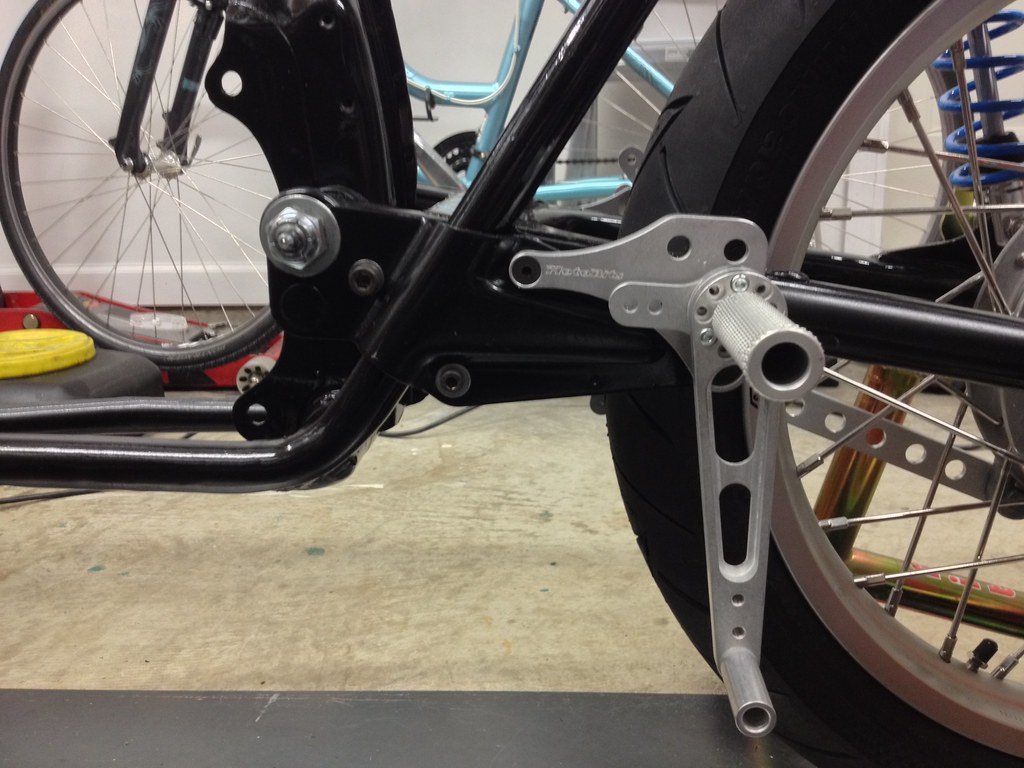
I installed a much shorter footpeg mounting bolt but there's barely any room between that and the swingarm. I wonder it the problem will go away once the motor is installed and I set rear suspension sag properly.
Safety wire and blue loctite the cam sprocket bolts
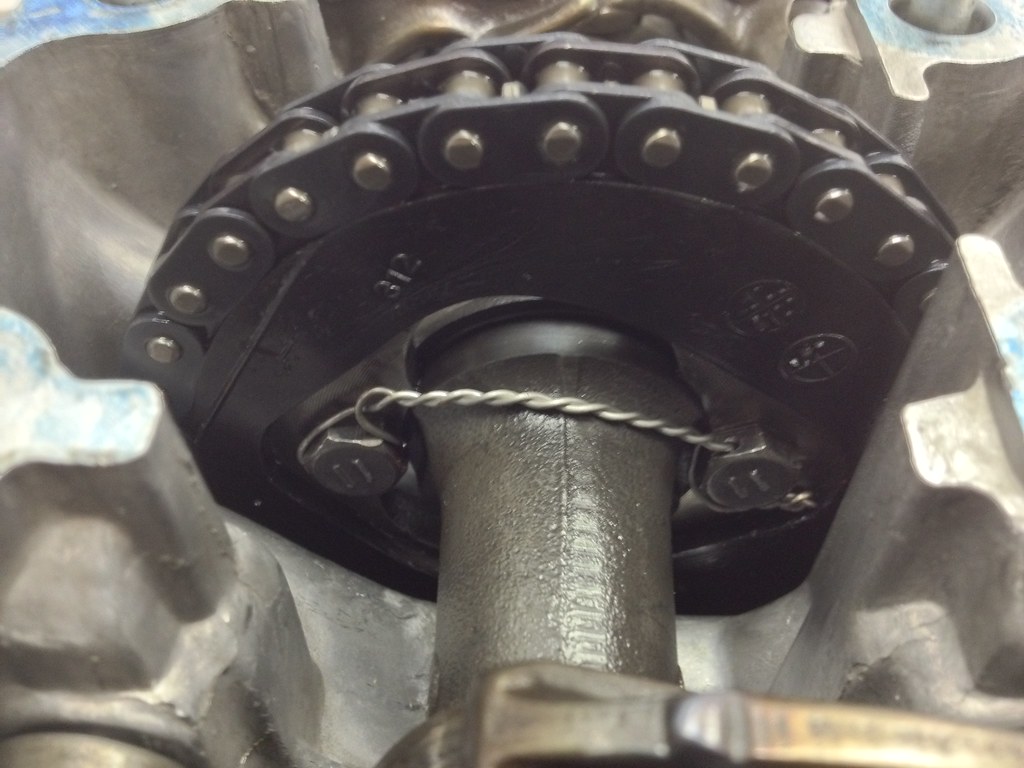
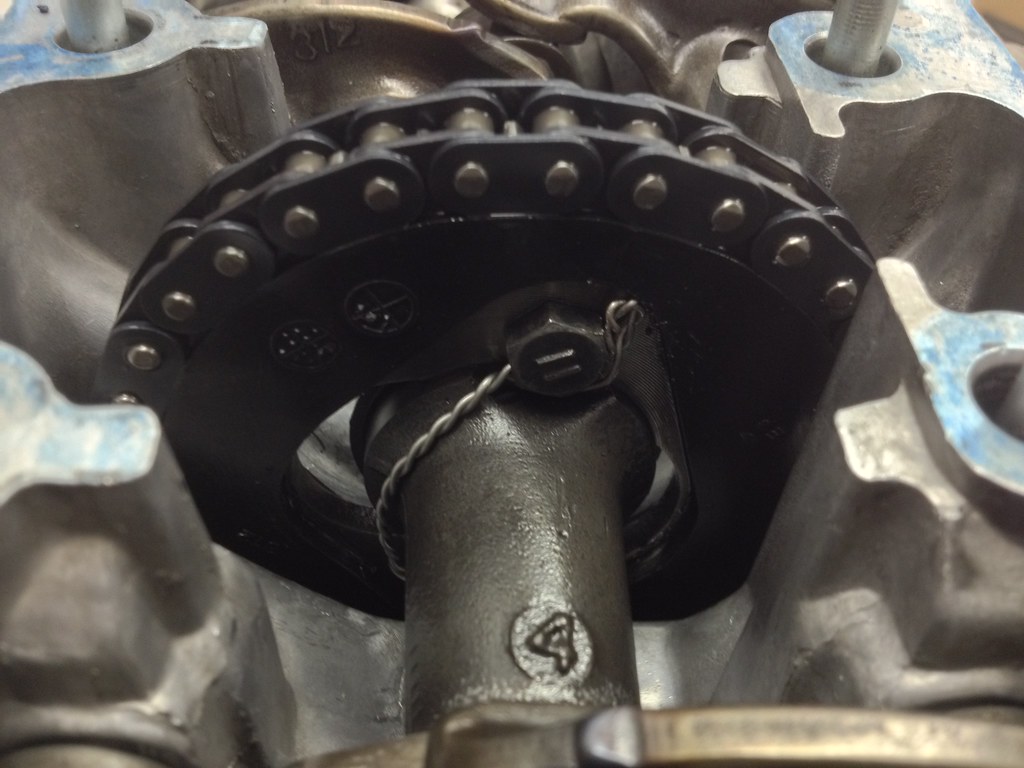
Tip I learned from midge. The originals bolts did just fine for 40 years but I doubt the bike was ridden the way I plan to ride it on the race track. Hopefully this helps avoid any future calamity.










